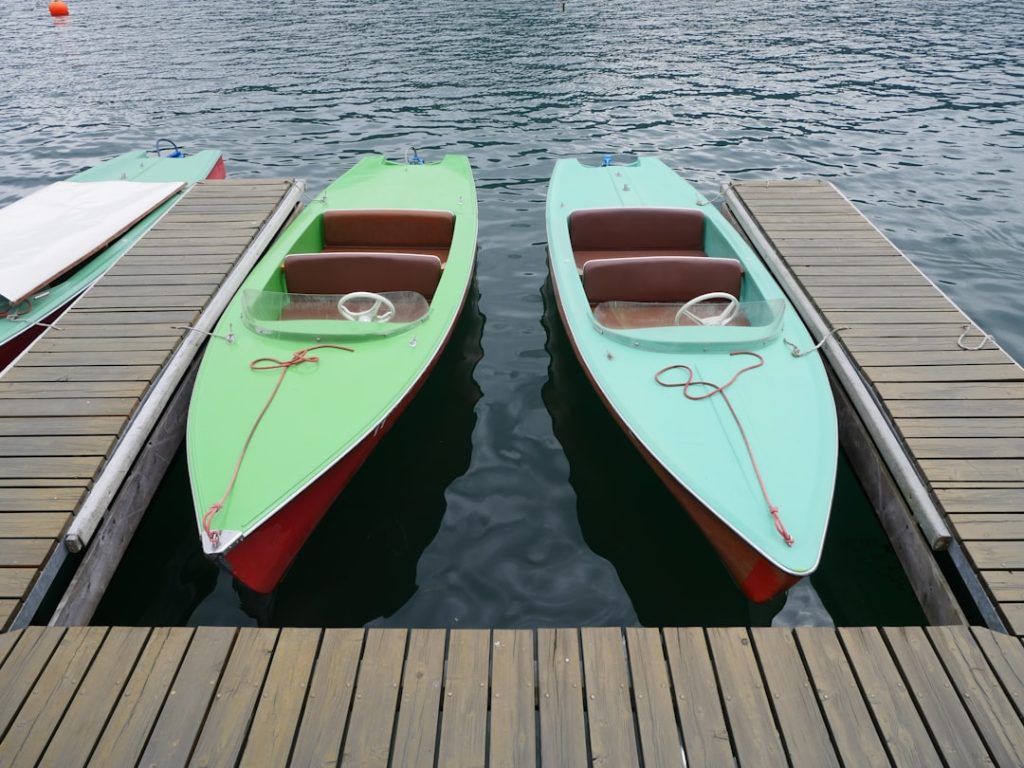When embarking on the journey of purchasing a boat, the first and most crucial step is to thoroughly understand your needs. This involves a deep introspection about how you intend to use the boat. Are you looking for a vessel for leisurely weekend outings with family, or do you have aspirations of competitive sailing?
Perhaps you envision long voyages across the open sea or fishing trips in local waters. Each of these scenarios demands different types of boats, from small sailboats and motorboats to larger yachts and fishing vessels. Additionally, consider the number of people you plan to accommodate.
A small boat may suffice for solo adventures or intimate gatherings, but if you envision hosting friends and family, a larger craft with ample seating and sleeping arrangements becomes essential. Furthermore, think about the type of water you will be navigating. Will you be cruising on calm lakes, navigating coastal waters, or tackling rough seas?
Each environment presents unique challenges and requirements that will influence your choice of boat. Understanding these factors will help narrow down your options and ensure that your investment aligns with your lifestyle and aspirations.
Key Takeaways
- Clearly define your boating needs before starting the search.
- Research various boat types and sellers to find the best match.
- Establish a realistic budget including purchase price and ongoing costs.
- Factor in maintenance, storage, and repair expenses for long-term ownership.
- Thoroughly inspect the boat and verify seller credibility before finalizing the deal.
Researching Available Options:
Once you have a clear understanding of your needs, the next step is to research the available options in the market. The boating industry offers a vast array of choices, from brand-new models to pre-owned vessels, each with its own set of features and specifications. Start by exploring different types of boats that fit your intended use.
For instance, if you are interested in fishing, look into center console boats or bass boats that are designed specifically for that purpose. If sailing is your passion, consider various sailboat designs, such as catamarans or monohulls, each offering distinct advantages. Utilizing online resources can significantly enhance your research process.
Websites dedicated to boating enthusiasts often provide reviews, comparisons, and forums where current boat owners share their experiences. Additionally, visiting boat shows can offer firsthand insights into various models and allow you to interact with manufacturers and dealers. Engaging with local boating communities can also provide valuable recommendations and insights into what works best in your area.
By gathering as much information as possible, you can make an informed decision that aligns with your needs and preferences.
Setting a Budget:

Establishing a budget is a critical step in the boat-buying process that requires careful consideration. The cost of a boat can vary dramatically based on its type, size, age, and condition. Beyond the initial purchase price, it is essential to account for additional expenses such as insurance, registration fees, maintenance costs, and fuel expenses.
These ongoing costs can add up quickly and should be factored into your overall budget to avoid any financial strain down the line. When setting your budget, it is also wise to consider financing options if you do not plan to pay for the boat outright. Many financial institutions offer loans specifically for boat purchases, but interest rates and terms can vary significantly.
It is advisable to shop around for the best financing options available to you. Additionally, consider setting aside a contingency fund for unexpected repairs or upgrades that may arise after your purchase. By taking a comprehensive approach to budgeting, you can ensure that your boat purchase remains a source of joy rather than financial burden.
Considering Maintenance and Upkeep:
| Maintenance Aspect | Frequency | Estimated Time Required | Common Issues Addressed | Recommended Tools/Materials |
|---|---|---|---|---|
| HVAC System Check | Bi-Annual | 2-3 hours | Filter replacement, duct cleaning, thermostat calibration | Filters, cleaning brushes, screwdrivers |
| Roof Inspection | Annual | 1-2 hours | Leak detection, shingle replacement, gutter cleaning | Ladder, sealant, gloves |
| Plumbing Check | Annual | 1-2 hours | Leak repairs, pipe insulation, valve testing | Wrenches, pipe tape, sealant |
| Exterior Painting | Every 3-5 years | 2-5 days | Peeling paint, weather damage, mold removal | Paint, brushes, scrapers, ladders |
| Landscaping Maintenance | Monthly | 3-4 hours | Weed control, lawn mowing, pruning | Lawn mower, pruning shears, fertilizers |
Owning a boat comes with its own set of responsibilities, particularly when it comes to maintenance and upkeep. Different types of boats require varying levels of care; for instance, a fiberglass motorboat may need regular cleaning and polishing to maintain its appearance, while a sailboat may require more attention to its rigging and sails. Understanding the maintenance requirements of the specific type of boat you are considering is essential for ensuring its longevity and performance.
Moreover, it is important to factor in seasonal considerations when planning for maintenance. Boats often require winterization in colder climates to prevent damage from freezing temperatures, which can add to your annual upkeep costs. Regular inspections and servicing are also crucial; engines need routine checks, and hulls should be inspected for any signs of wear or damage.
If you are not comfortable performing maintenance tasks yourself, consider budgeting for professional services or finding a reliable marina that offers maintenance packages. By being proactive about upkeep, you can protect your investment and enjoy many years of boating adventures.
Evaluating Seller Reputation:
The reputation of the seller plays a significant role in the boat-buying process. Whether you are purchasing from a private seller or a dealership, it is essential to conduct thorough research on their credibility and track record. Start by looking for reviews or testimonials from previous customers; reputable sellers often have positive feedback that reflects their reliability and customer service standards.
Online platforms such as boating forums or social media groups can provide insights into the seller’s reputation within the boating community. Additionally, consider asking for references from past buyers who have purchased similar boats from the seller. A trustworthy seller should be willing to provide this information without hesitation.
If purchasing from a dealership, check if they are members of any professional organizations or associations within the boating industry; membership can indicate a commitment to ethical practices and customer satisfaction. By taking the time to evaluate the seller’s reputation, you can mitigate risks associated with potential scams or subpar products.
Inspecting the Boat:

Before finalizing any purchase, conducting a thorough inspection of the boat is paramount. This step allows you to assess the condition of the vessel firsthand and identify any potential issues that may not be apparent in photographs or descriptions. If you are not experienced in boat inspections, consider hiring a marine surveyor who can provide an expert evaluation of the boat’s condition.
A surveyor will examine critical components such as the hull integrity, engine performance, electrical systems, and safety equipment. During your inspection, pay close attention to signs of wear and tear that could indicate underlying problems. Look for cracks in the hull, rust on metal components, or signs of water damage inside the cabin.
Additionally, test all systems on board—check the engine’s responsiveness, inspect the steering mechanism, and ensure that all electronics are functioning properly. If possible, take the boat out for a test drive to experience its handling and performance on the water. This hands-on approach will give you confidence in your purchase decision and help avoid costly surprises after the sale.
Negotiating the Purchase:
Negotiation is an integral part of the boat-buying process that can significantly impact your final purchase price. Once you have completed your research and inspection, it is time to engage in discussions with the seller regarding pricing and terms. Start by presenting any findings from your inspection that may justify a lower offer; for example, if you discovered necessary repairs or maintenance issues during your evaluation, use this information as leverage in negotiations.
It is also beneficial to have a clear understanding of market values for similar boats before entering negotiations. This knowledge will empower you to make informed offers based on comparable sales data rather than relying solely on the seller’s asking price. Be prepared for counteroffers and remain flexible; negotiation is often a back-and-forth process that requires patience and strategy.
Ultimately, aim for a fair price that reflects both the value of the boat and your budgetary constraints.
Finalizing the Sale:
Once negotiations have concluded successfully, it is time to finalize the sale—a process that involves several important steps to ensure everything is legally binding and properly documented. Begin by drafting a purchase agreement that outlines all terms discussed during negotiations, including the final price, payment method, and any contingencies related to inspections or repairs. Both parties should review this document carefully before signing to ensure mutual understanding.
After signing the agreement, it is essential to handle all necessary paperwork related to ownership transfer. This typically includes obtaining a bill of sale and ensuring that any existing liens on the boat are cleared before finalizing payment. Additionally, check local regulations regarding registration and titling; some states require specific forms or documentation before allowing new owners to register their vessels officially.
Once all paperwork is complete and payment has been made, celebrate your new acquisition! You are now ready to embark on countless adventures on the water with your new boat.


